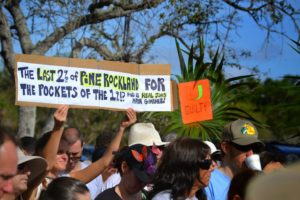 |
| Only 2% of pine rockland forest remains within the urbanized areas of Miami-Dade County and outside of the protective border of Everglades National Park. |
Last Saturday, January 17th, ARCI attended the Rally for the Rocklands in Miami, Florida to show our opposition to turning the largest remaining tract of endangered pine rockland forest outside of the Everglades National Park into a Wal-Mart shopping center, apartments, a resort hotel and 930-million dollar amusement park. This site, which surrounds Zoo Miami, represents “the last stand for the embattled forest, the biggest swath found outside the protected confines of Everglades National Park and a rare tract that has withstood the decades-long onslaught of development in South Florida” (Miami Herald, 12/27/14). Pine rockland has exceptionally high plant and animal diversity, including species that occur nowhere else.
A large portion of this land, originally owned by the people of the United States, had been donated for educational purposes to the University of Miami, which then sold it to a company planning to build the Wal-Mart shopping center and 900-unit apartment complex. The adjoining parcel, still in public ownership, would be destroyed to create a large water park, “Miami Wild,” themed after wildlife of the region. This ironically-named tourist attraction and large hotel would be built jointly by Miami-Dade County and Twentieth Century Fox. Despite widespread opposition from many fronts, the County Commission is pushing forward on all of this by officially designating these lands “slums” and “blighted”.
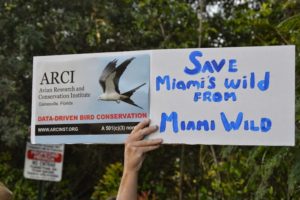 |
| The irony of destroying Miami’s wildlife to make a wildlife-themed amusement park named “Miami Wild.” |
In the 1990s, ARCI’s staff studied the distinctive bird community of pine rockland in Everglades National Park, where at least six species, including Red-cockaded Woodpeckers and Southeastern American Kestrels, had disappeared due to the expansive development of most of this habitat (what is now Miami and the surrounding urban areas). The loss and fragmentation of this forest made it impossible for the remaining populations to persist or to be recolonized by immigrants from the nearest surviving populations, mainly in Big Cypress Swamp. This research led to reintroductions of two such species, the Eastern Bluebird and Brown-headed Nuthatch.
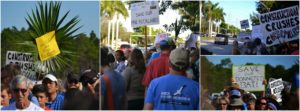 |
| An estimated 750 people attended the Rally for the Rocklands and spread out along SW 152nd St. outside of the Zoo Miami entrance. |
The parcels targeted for development are part of the largest fragment of pine rockland outside of protected areas. The habitat is home to resident endangered species and also large enough to be of significant ecological importance for animals and birds that move between even smaller pockets of habitat that remain in neighborhood backyards. If there is any hope of sustaining the rockland plant and animal species, we must be sure to protect and manage all that we still have, both on public and private lands.
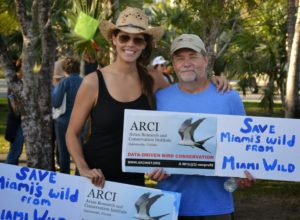 |
| ARCI’s Executive Director, Ken Meyer. |
What you can do:
- Please follow this issue on the South FloridaWildlands Association Facebook page and consider their requests for letters, public activities, and other support.
- Watch ARCI’s Facebook for comments to the County Commission and other policy makers.

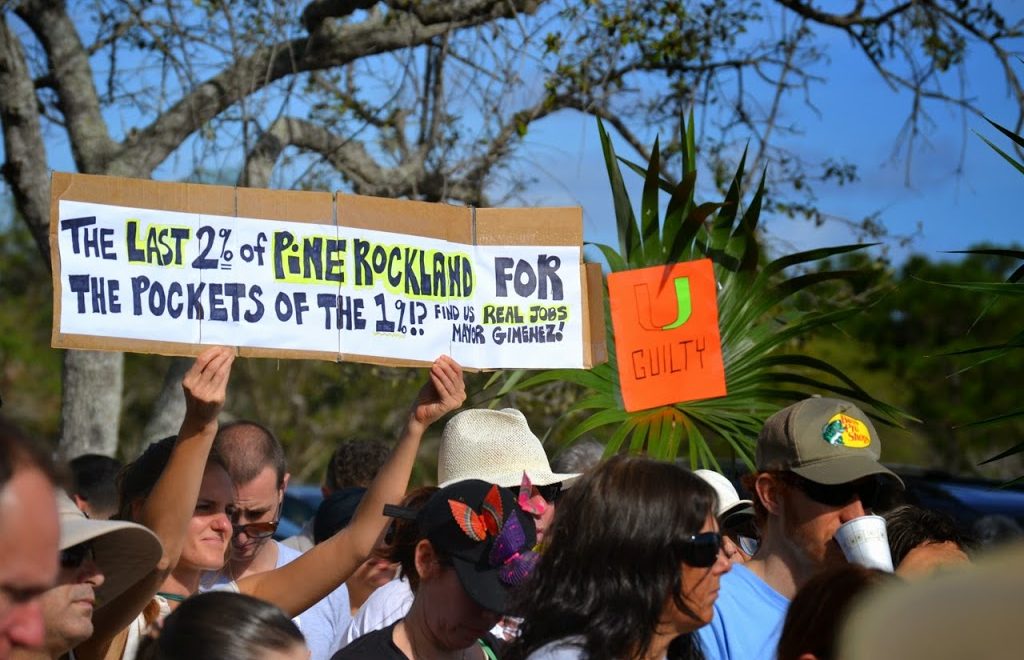
Leave a Reply